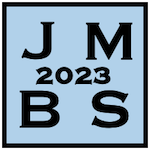One third of the annual world's crop production is directly or indirectly damaged by insects. Early detection of invasive insect pests is key for optimal treatment before infestation. Existing detection devices are based on pheromone traps: attracting pheromones are released to lure insects into the traps, with the number of captures indicating the population levels. Promising new sensors will soon be available to directly detect pheromones produced by the pests themselves and dispersed in the environment. Inferring the pheromone emission would allow locating the pest's habitat and performing pesticide-free elimination treatments, in a precision agriculture context.
In order to identify the sources of pheromone emission from signals produced by sensors spatially positioned in the landscape, the inference of the pheromone emission (inverse problem) is performed by combination of a pheromone dispersion model (direct model), a priori biological knowledge and pheromone sensors data. The model of pheromone concentration dispersion in the atmosphere is a 2D reaction-diffusion-convection model [1]. A sensitivity analysis of this propagation model is performed with respect to environmental parameters. A priori biological knowledge on pest behaviour (favourite habitat, insect clustering for reproduction, population dynamic behaviour...) is introduced to constrain the inverse problem towards biologically relevant solutions. The accuracy of solution of the inverse problem is assessed on simulated noisy data.
This work was carried out with the financial support of the French Research Agency (ANR), Pherosensor project (https://pherosensor.inrae.fr/).
References:
[1] Stockie, J. M. (2011). The mathematics of atmospheric dispersion modeling. Siam Review, 53(2), 349-372.

 PDF version
PDF version
